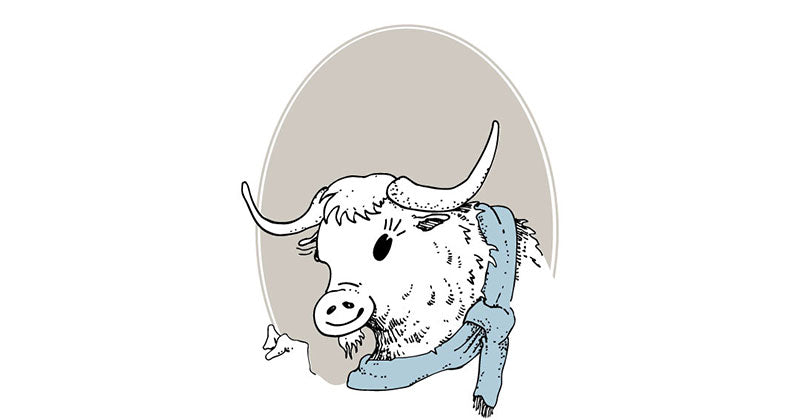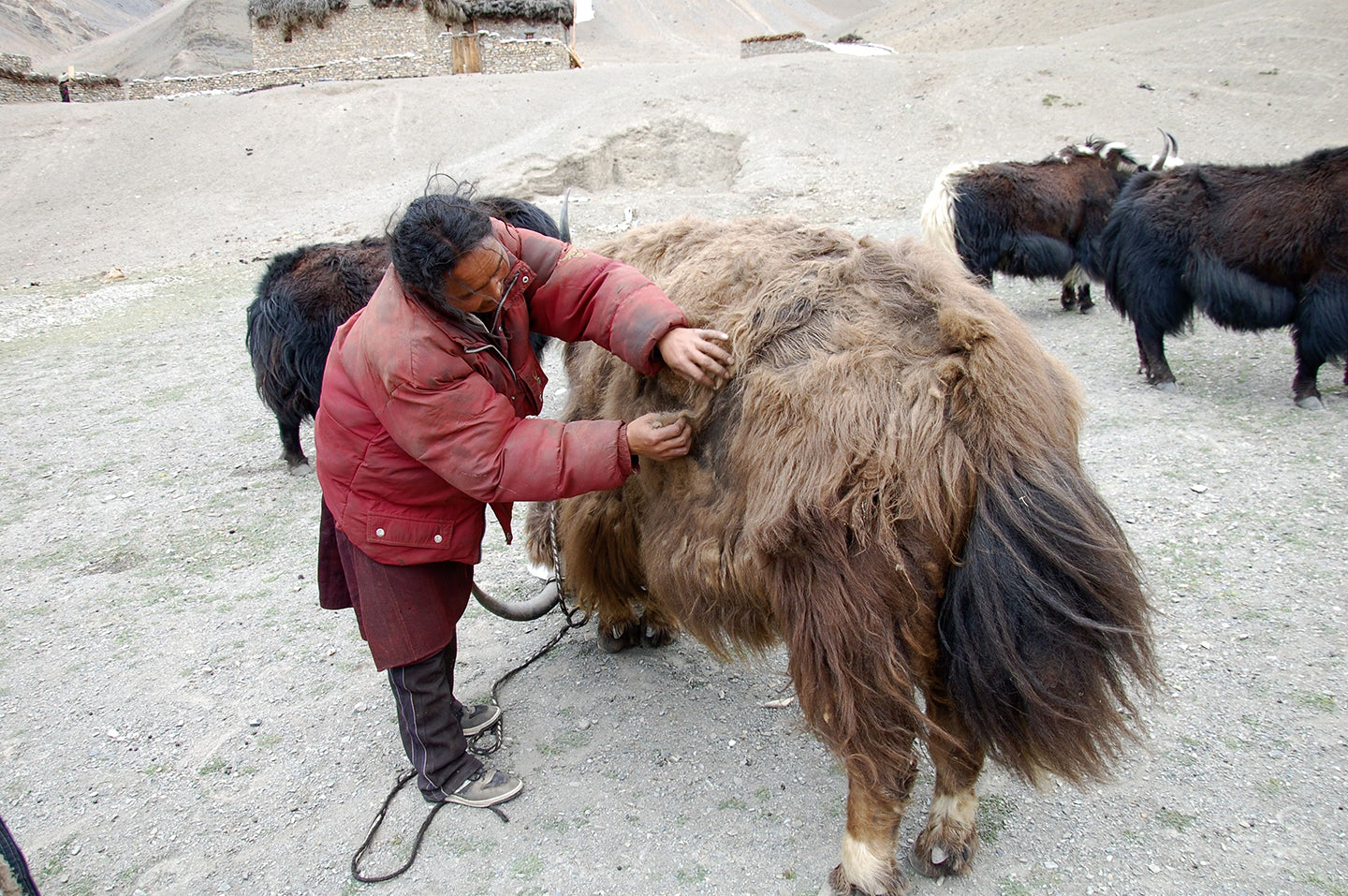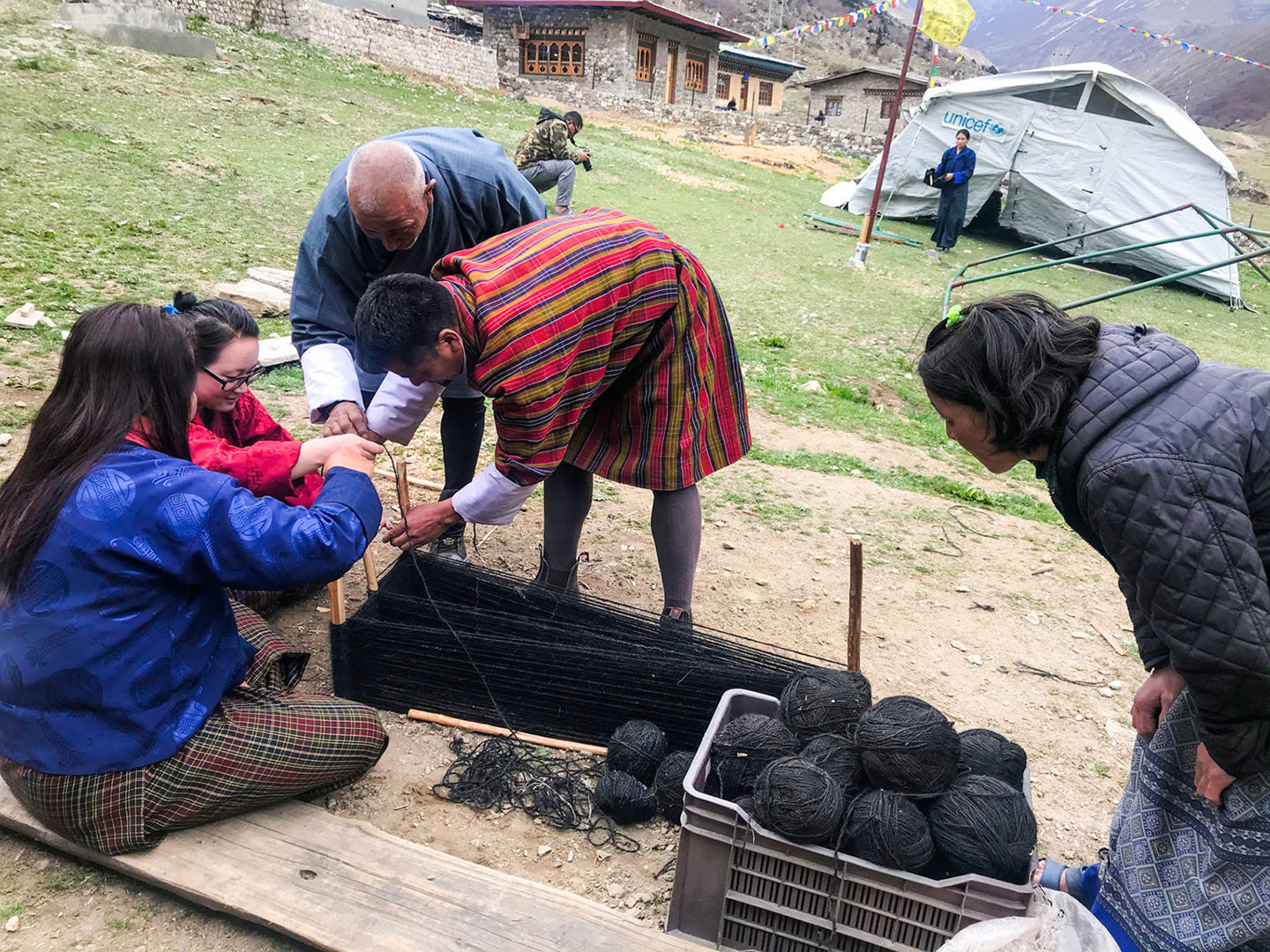
KOZIYAK WOOL IMPORTS
Koziyak Wool Imports is a premium brand specializing in naturally harvested wool from the pristine landscapes of Bhutan. Our commitment lies in preserving traditional practices, working directly with local communities to ethically source high-quality yak wool. By blending sustainable methods with the timeless craftsmanship of Bhutanese artisans, Yak's Wool offers products that embody warmth, durability, and a deep respect for nature and culture.

HOW KOZIYAK PRODUCTS ARE MADE
Harvesting and spinning yak wool into clothing is a labor-intensive process that relies on traditional methods and careful craftsmanship. Here’s an overview of the steps:
1. Harvesting the Wool
- Seasonal Collection: Yak wool is typically harvested in the spring, during the natural molting season when yaks shed their undercoat.
- Hand-Combing: The soft undercoat, called "down," is carefully combed or collected by hand to avoid harming the animals. This down is the most valuable part of the yak’s coat, known for its warmth and softness.
- Sorting: The wool is sorted to separate the fine down from the coarser outer hair. The fine down is used for high-quality garments, while coarser fibers may be used for rugs or other sturdy products.
2. Cleaning and Preparation
- Washing: The raw wool is washed to remove dirt, oils, and debris. This is done gently to preserve the natural qualities of the fibers.
- Carding: The cleaned wool is carded, a process that aligns the fibers and removes any remaining impurities, making it easier to spin.
3. Spinning
- Traditional Spinning: In many communities, yak wool is spun by hand using a spindle or spinning wheel. This traditional method produces a yarn that retains its natural texture and resilience.
- Mechanical Spinning: For larger-scale production, modern spinning methods may be used, ensuring consistency and efficiency.
4. Dyeing
- Yak wool is often left in its natural shades of brown, gray, or cream, but it can be dyed using natural or synthetic dyes, depending on the desired outcome.
5. Weaving or Knitting
- Weaving: The spun yarn can be woven into fabric using traditional looms, creating textiles for garments or home goods.
- Knitting or Crocheting: The yarn may also be hand-knitted or crocheted into scarves, sweaters, and other clothing items.
6. Finishing
- After the textiles or garments are made, they are gently washed and sometimes brushed to enhance softness. This final step ensures the product is ready for use and maintains its luxurious feel.
The result is a line of warm, durable, and sustainable products that celebrate the natural qualities of yak wool while supporting traditional practices and local artisans.


ONLINE STORE OPENING SOON
Be the first to know when we launch.
